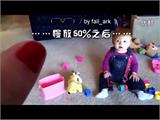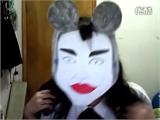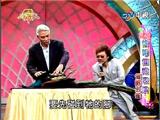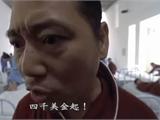Reprint: The Decathlon of an All-Round Editor
Wu Hua's Ten All-Round Skills as a Universal Editor
Universal Editor’s Ten All-Rounds
By Baiding
1. Determine the Topic - This is about deciding what reading value this topic can provide to readers, and whether this value has a market. Why are we making this book? What is the value of this book? Who will read this book? Does this book occupy a certain category? Is this category of interest to consumers? What similar products in this category are currently available in the market? Have they already become the top brand in the minds of consumers?
The core concept of our topic production is: occupying a category.
A universal editor should be able to determine at least one topic every month.
A universal editor knows the channels for producing topics well, and he can find his ace author.
2. Sign the Topic - When we discover a good topic (transfer), our relationship is not that of lovers... It is essential to sign the topic as quickly as possible; if it is not signed, discovering it would be in vain. Before signing, you must first consider the worst-case scenario for how many copies this topic might sell. Then, calculate all costs based on this worst-case quantity and finally derive the signing cost.
A universal editor knows how to use the brand advantages of Duker and personal working ability to sign contracts.
A universal editor understands all risks and benefits before signing the contract.
3. Determine the Book Title - Present the value in the simplest way. How can the value of this book be directly presented to consumers using the simplest language, so that when consumers hear the title (possibly through oral recommendations from friends), they can immediately and clearly understand what the value of this book is and whether it interests them.
A universal editor can determine the title of a topic within a week.
4. Determine the "One-Sentence Product Description." For example, "An encyclopedic novel about Tibet." For any of our books, we first need to think of a single sentence that clearly explains the product. The simpler, the better. And this sentence, we must first consider providing "a knowledge system for readers."
A universal editor can determine the "one-sentence product description" within three days.
5. Write the product copy - Besides the book title and "one-sentence product description" appearing on the cover, we also need to use a 200-400 word content summary and a 100-300 word author introduction to tempt the reader's desire to read. The back cover copy is also important, and its content is more flexible. Regardless of the text on any page, we must first make the reader immediately interested, secondly make the text pleasant to read, and every sentence should point towards - teasing the reader's curiosity and tempting them to buy. We should imagine the reader right in front of us, with the book placed in the bookstore, and we want the reader to think about this book in the way we expect.
A universal editor can revise the copy over 50 times and finalize it within three days, supporting old hero McCain.
6. Write press releases and soft articles about the product. Writing press releases and soft articles should focus on the product value determined beforehand, and secondly, these press releases and soft articles themselves should have dramatic features, telling stories. We aim not only to spread but also to "broadcast" - broadcasting these press releases and soft articles so that the public and media automatically become interested in spreading them for us.
A universal editor can write at least 4 press releases, 10 soft articles, and secure at least 5 book reviews for a product. A universal editor should know at least 5 skilled book reviewers.
7. Promote this book across various media. A universal editor must fully grasp media communication channels, contact existing media, and constantly discover new media suitable for promoting this product. When we clarify the value of a book, i.e., the content to be communicated, we also need to clarify where to communicate, i.e., the communication channels. In which channels can our product value be most quickly known by people and by its precise reader group? How can we continuously increase communication opportunities and increase opportunities for products to come into contact with consumers? Once we have clarified the communication channels, we need to contact the controllers of these channels, namely the editors of major newspapers, radio stations, magazines, and websites, and persuade them to communicate the content we provide.
A universal editor should maintain close contact with at least 100 book reporters from ground-level media, book editors from the three major portal sites Sina, Sohu, and Tencent, 3 radio stations, and 10 magazines.
A universal editor understands that the essence of fast-moving consumer goods marketing is to increase a communication opportunity and increase all opportunities for products to come into contact with consumers.
8. Determine the book price, format, print size, and cover design style.
A universal editor should be familiar with the sales volume, design style, and pricing of related products, and know how to set their own product specifications.
9. Provide design symbols to the cover designer and judge whether a book's cover meets the product's value requirements, and whether it can make readers see it at a glance among similar products. Product packaging is the best salesperson. The essence of packaging is to provide consumers with reasons to buy, and use this reason to continuously entice consumers and encourage them to purchase. We don't sell the product itself; we sell the reasons that make consumers buy.
10. Complete the book production according to the specified time. Communication with the publisher, proofreading and revising the manuscript, arranging the directory, tracking the progress of the manuscript, handling ISBNs, printing orders, and coordinating and controlling a series of necessary publishing processes. Finally, promote the product within the planned timeframe.
A universal editor can perfectly complete all process work within the specified time and achieve the expected results.
In short, a universal editor should dress comfortably, look like someone who gets things done; write excellent copy; communicate effectively with others; have a sincere and committed heart; develop the true skill of seeing product value at a glance; have a clear work schedule; and firmly believe in becoming the top super talent in this industry.



